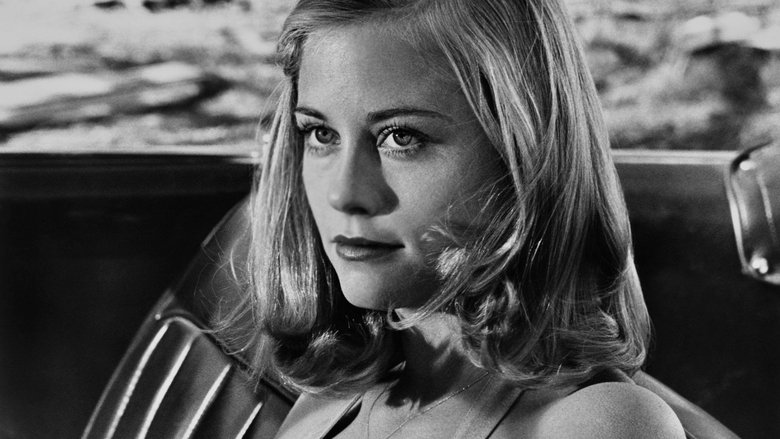← Back to Reviews

in
Not accidentally, director/co-writer/editor Peter Bogdanovich's first major film met with critical success:
8 Academy Award nominations, more accolates from critics and awards organization and the movie established the careers of Bogdanovich and several of his young stars. The Last Picture Show is a slice of Texan life in the 50's, just as war and television were ending one era and ushering in a new one.
The film's kicker title "nothing much has changed" provides an informative starting point for looking at the story. The film is partially a comparison between young adults and their older progenitors, and there's plenty of common ground.
The central character is 18 year old Sonny Crawford (played by Timothy Bottoms), a somewhat quiet, good-hearted young man. Sonny's interactions with the people in this forlorn little Texas town provide the
framework for a year in the lives of a pretty broad array of characters, played with amazing verisimilitude by an excellent cast. We're afforded an intimate (sometimes very!) look into the motives and struggles of a town full of people straining aginst the slow tempo of small-town life. Hollywood provides them a glimse of glamour that they naively expect to find in their own lives, all the while failing to see the beauty in each other. The exception to this is a remembered affair between Sam the Lion (the emotional heart of the town) and the now "society" wife. She describes the import of that relationship in a speech to Sonny: "I guess if it wasn't for Sam, I'd just about have missed it, whatever it is. I'd have been one of them Amity types, who thinks that playing Bridge is about the best thing that life has to offer." Sam himself recalls their affair in (I'd say) the most touching speech in the film, as a wild time shared by two people who "were in deep". The speech brought an Oscar to the mantle of semi-retired western star Ben Johnson, who turned down the role three times before finally accepting with the comment that it had "too many damn words".
By contrast, Jacy (Cybill Shepard's debut role) is the only pretty girl in town, invited to all the wild parties and the object of desire of every man who sees her (and I'm not sure but I think Eileen Brennan's character kinda liked her, too), but she is having no fun. Her romantic pursuits are purely grabs for status, best summed up by her proposal to Sonny: "You just can't believe how famous we are. We're all anybody talks about in this town now...I want us to get married...Just as soon as you want to. Don't you want to?...I bet the whole town'll be knocked for a loop if we do. They'll never forget it."
Jeff Bridges handles the role of Sonny's best friend, bringing a charm and vulnerability to a character that is fairly unlikeable in Larry McMurtry's novel. Cloris Leachman, Ellen Burnstyn and Eileen Brennan bring depth, grace and passion to their roles.
The most important feature in this film, as mentioned above, is it's dedication to truth. Bogdanovich's script is fairly devoid of flowery language, despite the fairly profound subject matter. The acting is uniformly direct, unvarnished and very honest. On the recommendation of Orson Welles (a friend of Bogdanoviich's), the film was shot in black and white, for clarity in the depth of field, and those background shots root the story in the run-down reality of a sun-ravaged and almost forgotten town. Another deep root for the story is provided by the music chosen to play on radios, television and record players throughout, sometimes illustrating subtext and at other times providing ironic contrast to the emotional reality of the characters.
I'd highly recommend this as a look at how to effectively transform a novel to the screen. In the "Making of..." special feature, Bogdanovich recounts many times when he was informed that his script version was not up to par. "It's better in the book" met the response "then use the book" - a wise choice that paid off handsomely.

|
The film's kicker title "nothing much has changed" provides an informative starting point for looking at the story. The film is partially a comparison between young adults and their older progenitors, and there's plenty of common ground.
The central character is 18 year old Sonny Crawford (played by Timothy Bottoms), a somewhat quiet, good-hearted young man. Sonny's interactions with the people in this forlorn little Texas town provide the
|
|

|
Jeff Bridges handles the role of Sonny's best friend, bringing a charm and vulnerability to a character that is fairly unlikeable in Larry McMurtry's novel. Cloris Leachman, Ellen Burnstyn and Eileen Brennan bring depth, grace and passion to their roles.
The most important feature in this film, as mentioned above, is it's dedication to truth. Bogdanovich's script is fairly devoid of flowery language, despite the fairly profound subject matter. The acting is uniformly direct, unvarnished and very honest. On the recommendation of Orson Welles (a friend of Bogdanoviich's), the film was shot in black and white, for clarity in the depth of field, and those background shots root the story in the run-down reality of a sun-ravaged and almost forgotten town. Another deep root for the story is provided by the music chosen to play on radios, television and record players throughout, sometimes illustrating subtext and at other times providing ironic contrast to the emotional reality of the characters.
I'd highly recommend this as a look at how to effectively transform a novel to the screen. In the "Making of..." special feature, Bogdanovich recounts many times when he was informed that his script version was not up to par. "It's better in the book" met the response "then use the book" - a wise choice that paid off handsomely.
